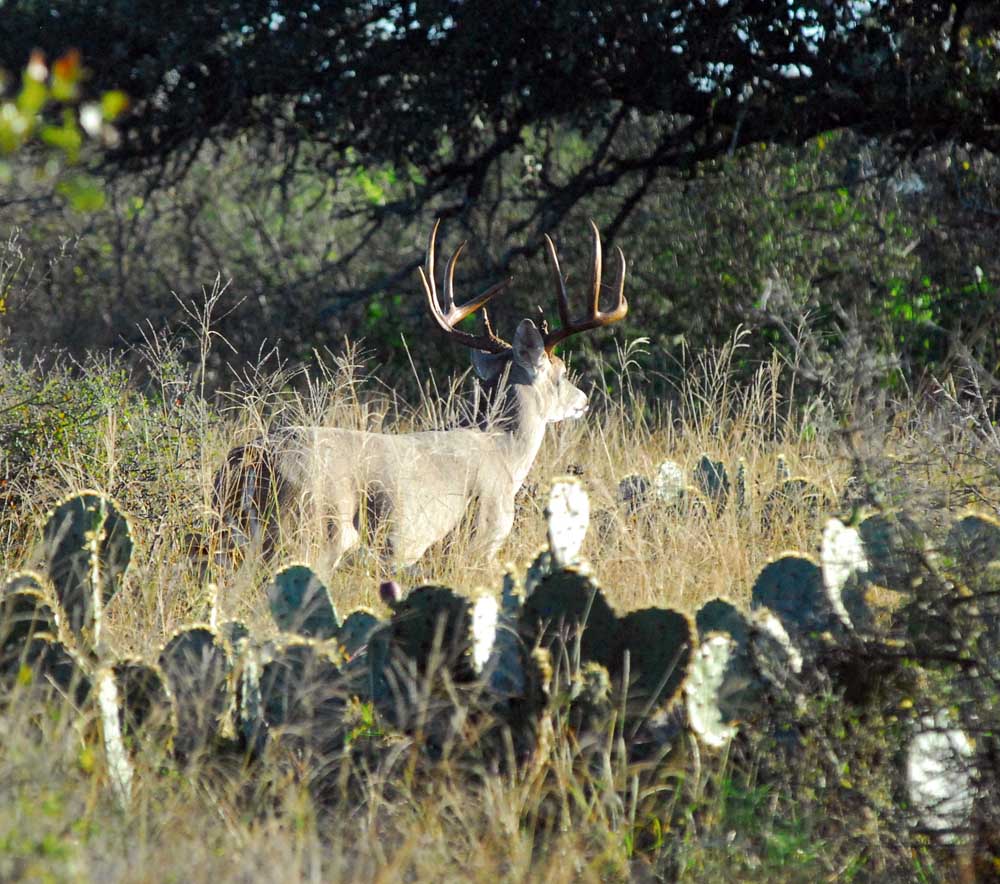Happy Days: Texas Hunters Can Expect Big Things This Deer Season
Published 11:35 pm Friday, October 25, 2019

- EXCELLent range conditionS starting last fall and leading into much of the summer should result in good antler development where deer have aged.
If there ever was a year to dream big when it comes to deer antlers, this should be it.
For much of the past year all of the stars, or better yet the weather forecasts, have aligned to create excellent antler growing conditions across Texas.
Trending
Rainfall started last September and continued for the most part through June before conditions got very Texas-like for summer. But by that time the die had been cast and antler development was well on its way.
The regular season opens statewide Nov. 2. With more than 800,000 hunters, the deer hunting season is a financial force to be reckoned with, reportedly accounting for between $1 and $2 billion worth of Texas’ multi-billion dollar hunting and fishing industry.
The face of hunting is changing in Texas. That includes a new generation filling slots opened as older hunters drop out. Hunter numbers are remaining consistent in the state, while their percentage of the total population dips.
“Hunting has a rich tradition and culture in Texas that helps to support a robust hunting community. Hunting license sales in Texas are stable unlike some other states that have seen declines in hunter numbers/license sales,” said Alan Cain, Texas Parks and Wildlife Departments deer program leader.
The numbers might actually be growing were it not for the high cost associated with deer hunting today and the lack of an entry point for those who don’t have a legacy in the sport or come from non-traditional backgrounds, such as minorities or women. Many of those who are joining the ranks in Texas come with a different outlook.
“Appealing to different motivations for hunting, whether that be the locavore movement, time to spend with family and friends in the outdoors, or for those more serious about management, for quality and healthy deer populations helps to sustain our hunting heritage in the state,” Cain said. “Although the younger generation may have different motivations for hunting they are certainly part of the hunting family in Texas and we need to encourage interested individuals to pursue that passion so that hunting remains a bright future in Texas.”
Trending
That does not mean there is a diminished interest in management, and of course antlers. That comes with hunters learning the importance of taking older, less productive bucks to help manage local herd numbers. Fortunately, those older bucks typically are also the trophies in a herd.
And it should be easier to find older, quality bucks this season because of the excellent conditions from winter through early summer, and good fawn production in key past years.
“Based on the above average fawn crop in 2012-14, expect to see more bucks in the 5.5 to 7.5-year old age classes. Over the last 5 years, 14-18 percent of the buck harvest has been comprised of bucks in the 5.5-year-old age class (and older), with most of the harvest comprised of the 3.5 and 4.5-year-old bucks,” Cain said in his annual deer outlook.
Some of that is the result of the interest in the Managed Lands Deer Permit program.
Last year there were about 12,000 properties covering more than 27 million acres enrolled in the program. Going to the effort to get permits and to abide rules usually insures participates are going to do all they can in regards to management.
Last year Texas deer hunters took an estimated 883,000 deer statewide, down from about 918,000 the previous year. That comes from a herd of more than 5 million, a number that has been growing at a rate of about 3.8 percent annually since 2008.
The dip in harvest numbers was completely weather related. Rainfall produced ample fall forbs to reduce deer movement and enough sloppy conditions to slow hunters down.
While the deer population grows and spreads, the hot spots for hunting remain much the same as they have for decades. The Edwards Plateau, with the densest population, continued to lead the state in overall harvest last season with 288,000. South Texas, with its quality of bucks, is second with 122,000, followed closely by the Cross Timbers in North Texas with 116,000, the Post Oak region with 101,000 and the Pineywoods with 99,000.
“Antler quality in 2019 is expected to be above average across most of the state,” Cain said. “Statewide average Boone & Crockett score in 2018 was 126.1 B&C for bucks 5.5 years old or older and 121.2 B&C for 4.5-year-old bucks, which are very respectable quality bucks for anywhere in the state.”
One change this year is an extension of doe-days from four to 16 in a number of counties including Smith, Delta, Hopkins, Rains, Titus, Van Zandt and Wood counties. The expanded season begins Nov. 2.
The regular season remains open through Jan. 5 in the North Zone and Jan. 19 in the South.



